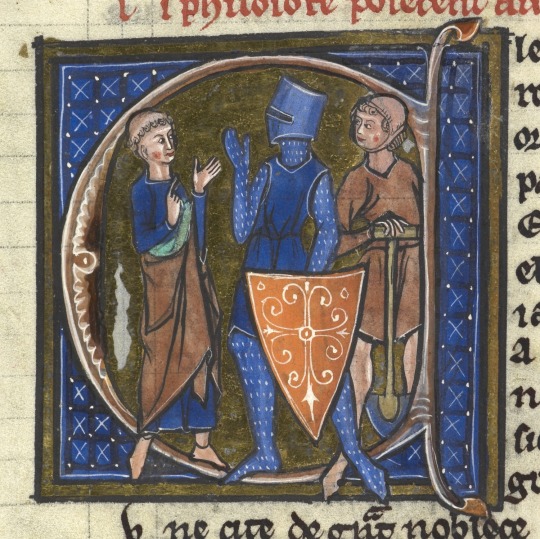#peasants
Explore tagged Tumblr posts
Text



AND HERE HE ISSS!!!
Red Son 🔥 from LMK!!
I took some freedom to design him to fit my style but mostly its still him! Hope you guys like this.
I really am enjoying everything im seeing about the show and stuff i maybe start some comics about some of my ocs (LMK and from different shows!) hopefully you guys like it. (*´ω`*)🥭
241 notes
·
View notes
Text
At the bottom were peasants, who grew food and carried away garbage. Society would collapse without them, so they were treated horribly.
Long Live Evil by Sarah Rees Brennan

321 notes
·
View notes
Text
A key issue in understanding who feeds the world is the distinction between calories produced and calories delivered. Simply because a farming method produces a lot of calories, does not mean that those calories are going towards feeding people. Calories can be wasted or channeled into animal feed, biofuels, and other non-food uses, complicating how we assess methods for alleviating hunger. Emily Cassidy and her team studied this phenomenon across major agricultural countries. They found that in India, for example, 89% of produced crop calories went to feeding people during the study period. In Brazil, however, that number was 45%. In the United States, which produces the most gross calories out of any country studied, it was only 27%.
Backgrounder: Small Scale Farmers and Peasants Still Feed the World
659 notes
·
View notes
Text


Westerwald, Germany 1910s
#august sander#westerwald#1910s#germany#history#vintage#photography#deutschland#people#portrait#art#peasants#religion
59 notes
·
View notes
Text


the 12 months and their corresponding peasant work (+ close-up of december)
in an encyclopedic miscellany ("liber calculationis"), salzburg, c. 818 AD
source: Munich, BSB, Clm 210, fol. 91v
#this is OLD old#love december's hand btw#9th century#medieval art#medieval manuscript#months#peasants#medieval labour
487 notes
·
View notes
Text


"Cleric, Knight, and Peasant representing the three classes", from Li Livres dou Santé
The tripartite social order of the Middle Ages: the ōrātōrēs (those who pray – clerics), bellātōrēs (those who fight – knights, that is, the nobility), and labōrātōrēs (those who work – peasants and members of the lower middle class).
#medieval#middle ages#manuscript#art#cleric#clergy#knight#nobility#peasant#workman#europe#european#history#knights#illustration#clerics#peasants#french#france
271 notes
·
View notes
Text

the harvest
31 notes
·
View notes
Text

Slack Wyrm #1189
http://linktr.ee/joshhamwright
208 notes
·
View notes
Text

You finally caught a big one, but...
61 notes
·
View notes
Text

NEVER ARGUE WITH IGNORANGE
There’s a saying, “Queens don’t argue with peasants.”
#succulentsiren#writers and poets#the love witch#it girl#affirmations#divine feminine#dark femininity#femininity#siren#dark feminine energy#love witch#witch#queen#peasants#ignorance#succeed#winner#mindset#personal growth#self help#growth#self care#positive thoughts#queen behavior#high value woman#high value#high value mindset#confidence#law of assumption#assume and persist
284 notes
·
View notes
Text

91 notes
·
View notes
Text
Most of the Crusades done by the Catholic Church were actually against their fellow Europeans, and were the quelling of peasant uprisings, usually stemming from Peasants learning how to read, therefore becoming a a financial threat to The Vatican by being able to teach people true Christianity, and cutting off their income from corrupt tithes and taxes in the process.
#Crusades#Catholic Church#Vatican#peasants#peasant uprisings#corruption#tithes#taxes#Europe#Europeans#Roman Catholicism#Christianity
69 notes
·
View notes
Text

During the Spanish revolution and the ensuing civil war, Spanish workers and peasants engaged in anti-clerical violence against the Church that spent centuries raping, molesting, murdering, beating, abusing, and oppressing them.
#communism#socialism#marxism#leftism#leftist#communist#marxist#socialist#anti capitalism#dismantle capitalism#religion is a scam#religion#catholic#catholicism#catholic church#spain#spanish civil war#spanish revolution#anticlericalism#anti clericalism#atheist#atheism#anti theist#anti theism#antitheist#antitheism#peasant#peasants#marx#karl marx
130 notes
·
View notes
Text

Ruins of the Naurattan, Sasaram, Bihar
Artist: Thomas Daniell (English, 1749–1840)
Date: 1811
Medium: Oil on canvas
Collection: Yale Center for British Art, New Haven CT, United States
#painting#landscape#ruins of the naurattan#bihar#sasaram#india#palace#peasants#fine art#oil on canvas#ruins#sheep#tree#thomas daniell#english landscape painter#yale center for british art#19th century painting#european art#artwork#19th century art
22 notes
·
View notes
Text

Astraea Leaving the Earth
Artist: Salvator Rosa (Italian, 1615-1673)
Date: ca. 1665
Medium: Oil on canvas
Collection: Kunsthistorisches Museum Vienna, Austria
Description
According to the Roman poet Virgil, Astraea, the goddess of justice, is the last of the gods to leave the corrupted earth at the end of the Iron Age, the age of complete decay of culture and morals. She leaves her attributes, the fasces (bundle of rods) and scales, to the just and peaceful peasants. This characteristically Baroque mixture of literature and symbolism expressed both pessimism and hope for renewal. Since ancient times, the simplicity of peasant life has been seen as a herald of this hope for happy, golden times.
#mythology#literature#mythological scene#goddess astrae#floating#peasants#literary scene#female figures#male figures#clouds#gown#costume#drapery#oil on canvas#fine art#oil painting#artwork#italian culture#italian art#salvator rosa#italian painter#european art#17th century painting#kunsthistorisches museum
11 notes
·
View notes